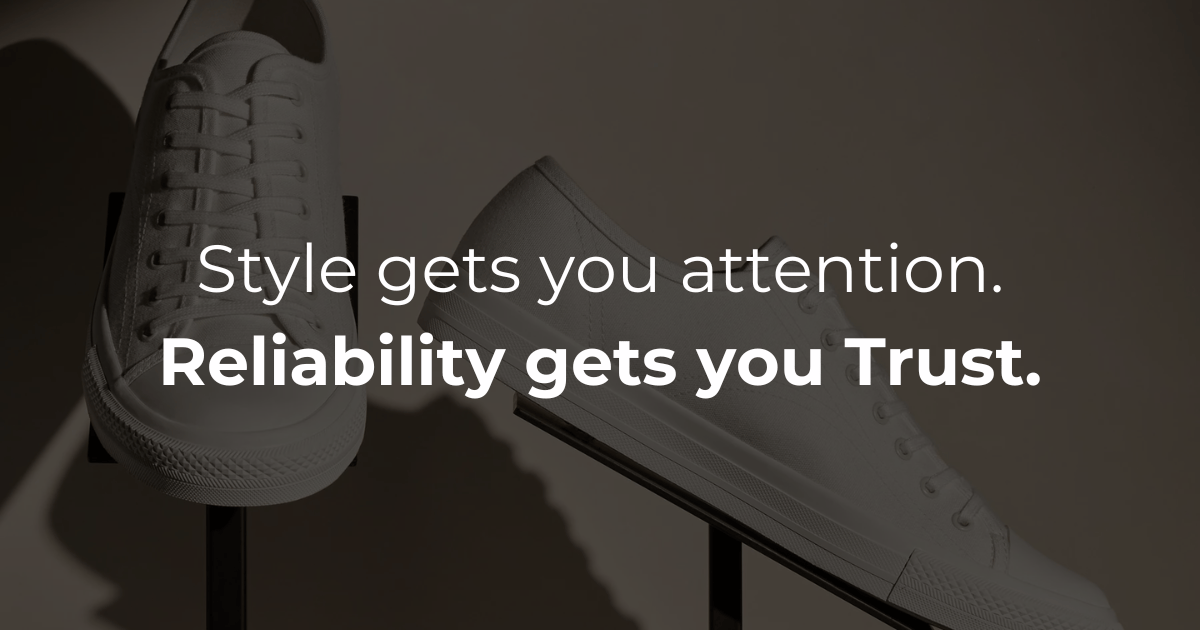- Creative Caffeine by Erin Bornstein
- Posts
- How 1 shoe got $550,000 in additional sales in 1 season
How 1 shoe got $550,000 in additional sales in 1 season
What most brands forget about footwear

How we got $550,000
in additional sales from 1 shoe
ReBorn Designs / Read Time: 3.4 min
Our best sneaker wasn’t the most stylish.
As a designer at Sperry, I focused on style.
If I wanted to make designs that sold or got the attention of higher-ups, I made stylish designs.
Took them to pitch sessions, and had others look them over.
But then I noticed something weird.
The stylish shoes gathered dust on the shelves.
Instead, the plain shoes were our best sellers.
Even though my designs were more stylish.
Clean lines and proportions
Premium Material
Unique textures
The best-selling shoe was beating every single design for 5 years straight.
Kept repeat buyers returning and turning one-time buyers into lifetime customers.
It was a best-seller because it focused on something more fundamental.
Reliability is difficult and expensive especially if you’re starting out which is why we offer a holistic approach to footwear design combining our design, manufacturing, and strategy into 1 service so you know exactly how to create your shoe, how much it will cost, and where you’ll source the materials all before you invest time.
If you’re interested in learning more, book a free discovery call with us.

Not everyone wants style.
Both as a designer and agency owner, I’ve seen plenty of businesses focus on style & trends to stay ahead of competitors.
Trying to ride a wave before anyone else. They focus on style and aesthetics, yet don’t sell any footwear. When companies start copying each other, they drown in the sea of sameness.
Shoes gather dust on shelves and die in production.
Not because you focused on style, but because you place style, trends, and markets above the one thing that users care more about than anything in the world.
Reliability.
The Crest franchise sneaker was the bestselling program for over 5 years.
A canvas vulcanized white lace-up sneaker.
But sales suddenly started declining.
We went back to customer feedback. Turns out, the fit was too narrow. We listened to customer feedback: adding new wide-fit options in a refreshed seasonal style.
The result?
$550,000 sold in additional revenue in its first season
For most people, style wasn’t the biggest factor.
The brands I’ve worked with globally thrive because they understand 1 crucial component:
Comfort and fit should never take a back seat to style.
Consider this - the average person walks about 110,000 miles in a lifetime. That's equivalent to circling the globe over 4 times.
Your footwear - is it just an accessory?
Footwear is personal.
70% of consumers value comfort over style.
Get the basics right, and customers will keep coming back.
How to Measure Consumer Sentiment for Lifestyle Footwear (and Why It Matters)
Understanding what makes someone excited (or hesitant) to buy a pair of lifestyle shoes is key to refining product design, marketing, and sales strategy.
Whether you're a designer, brand manager, or retailer, measuring a consumer’s Sentiment to Buy Score (SBS) helps predict demand and overcome purchase barriers.
Here’s a 10-question survey framework to gauge a buyer’s sentiment effectively:
1. Initial Interest & Perception
How excited are you about buying a new pair of lifestyle shoes in the next 3 months? (Scale of 1-10)
What are the top 3 factors that influence your decision when purchasing lifestyle shoes? (Comfort, Style, Brand, Price, Sustainability, Performance, Celebrity Endorsement, etc.)
2. Emotional & Functional Drivers
How important is brand reputation in your decision? (Scale of 1-5)
Which of the following best describes how you want to feel in your lifestyle shoes? (Stylish, Confident, Comfortable, Trendy, etc.)
What words come to mind when you see this product? (Open-ended; great for testing visuals & messaging!)
3. Barriers to Purchase
What would prevent you from buying this shoe? (Price, Comfort, Availability, Brand Perception, etc.)
If given a choice between this and a competitor’s shoe, what would sway your decision? (Price, Design, Comfort, Reviews, etc.)
4. Purchase Intent & Final Sentiment
Where do you usually shop for lifestyle shoes? (Online, In-Store, Multi-Brand Retailers, etc.)
How likely are you to recommend this shoe to a friend? (Scale of 1-10)
If this shoe were available today at a fair price, how likely are you to buy it? (Scale of 1-10)
How to Use This Survey:
Higher scores (7-10 on intent questions) indicate strong interest and readiness to buy.
Lower scores (1-4 on barriers) signal concerns that need to be addressed, whether through better messaging, pricing strategy, or product improvements.
Open-ended responses offer insights into consumer perception and brand positioning.
By using these insights, brands can fine-tune their product launches, marketing campaigns, and sales approach to better align with what consumers actually want.
Your Turn: Make your Footwear Personal.
When you’re designing, keep in mind:
Comfort benefits
User lifestyle
User needs
Footwear is personal—get the basics right, and customers will keep coming back.
Cheers!
Erin

Powered by ReBorn Designs
PS: If you’re ready for more, here are other ways I can help:
If you have any questions, reply to this email.
Need more guidance? Hop on a Discovery Call & let’s talk more.
Follow me on LinkedIn for bite-sized tips throughout the week (free)